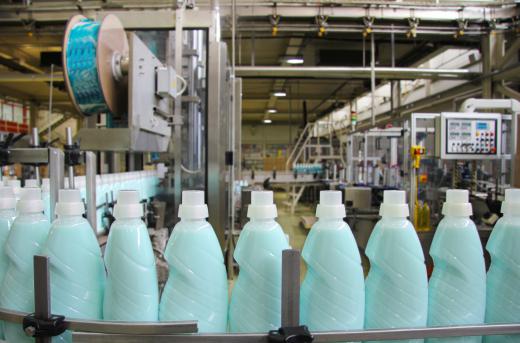A cleated conveyor is a type of conveyor belt that can transport materials across a horizontal plane, an incline, or a decline. Like other belted material handling devices, a cleated conveyor consists of a belt that is suspended on rollers, and powered by a motor. The cleats can either be an integral part of the belt or a modular attachment, and they can range in size from low-profile chevron patterns that function as mini-cleats, to tall dividers. Mini-cleats are useful for providing traction to large objects, while taller cleats are often used to facilitate the transport of loose substances.
Conveyor belts are a class of material handling devices that can be used to transport a wide variety of different items. These devices are commonly found in the material handling industry, but they are also widely used in many other industrial and commercial settings as well. They are most useful when transporting large objects, though some belts are also able to convey small parts and loose substances. One type of belt that is designed specifically for those purposes is the cleated conveyor.

The basic design of a cleated conveyor is very similar to that of a traditional conveyor belt, since both devices consist primarily of a powered belt that rides on a number of rollers. Cleated conveyors are capable of moving objects horizontally, just like regular conveyor belts. Unlike traditional conveyor belts, however, which have a limited ability to transport objects up or down an inclined plane, cleated conveyors are able to stop large items and loose substances from sliding down a slope.
Some cleated conveyors use modular vertical inserts, while others have built-in cleats. Large cleats can be modular or built-in, and range in size from about 0.25 inches (6.35 mm) to over 3 inches (about 7.6 cm). In some cases, tall cleats are paired with a raised wall or ledge that runs along edges of the conveyor. That can be useful in keeping loose substances from falling off the belt.
In some cases, built-in cleats can be even smaller than 0.25 in (6.35 mm), in which case they often follow a chevron pattern. That type of cleat is typically found on belts that are used to transport large items, boxes, or pallets across an inclined plane. Instead of offering a physical barrier to movement, these mini-cleats effectively provide traction to keep materials from sliding around.
Both cleated conveyor belts, and the actual cleats, can be made from a variety of materials. Common materials include rubber, urethane, and a numerous other polymers. The belts can be solid or made from chain links, and typically consist of modular sections. Some sections are designed for use on an inclined plane, while others allow the conveyor system to turn a corner.
